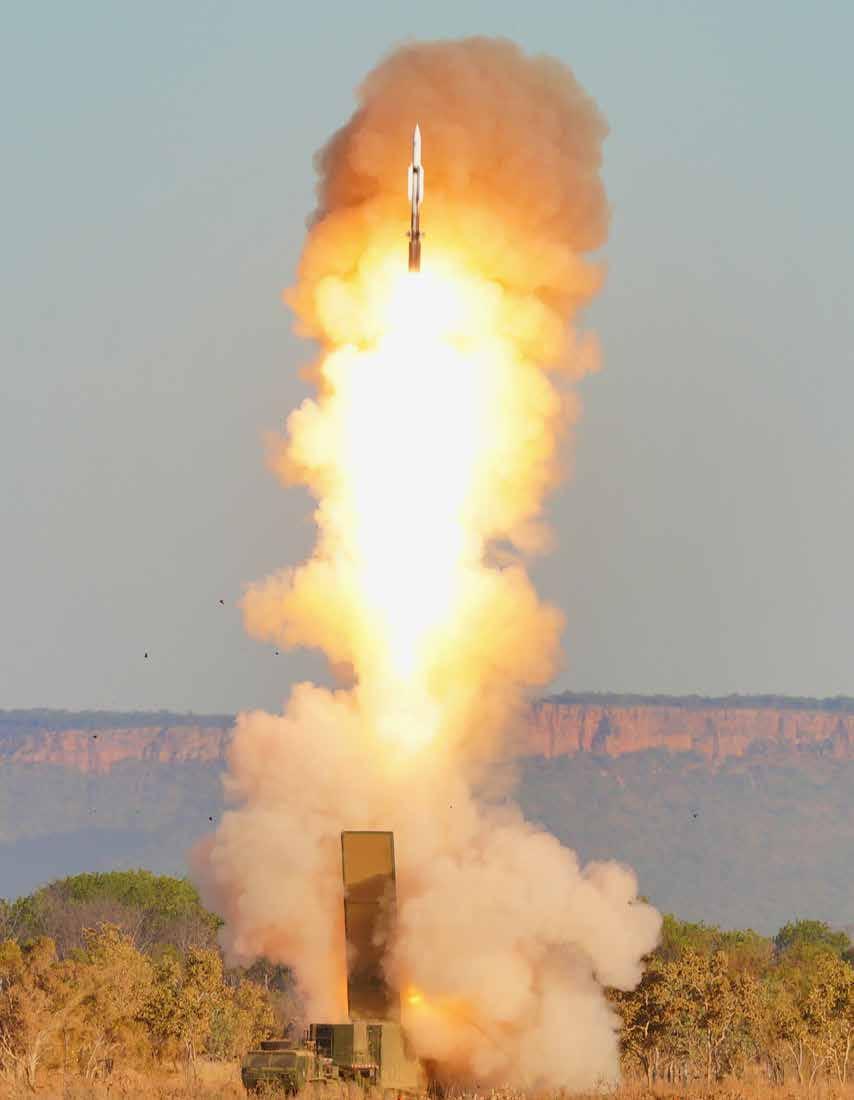

BEHLMAN LEADS THE PACK AGAIN!

Behlman introduces the first test-proven VPX power supplies developed in alignment with the SOSA Technical Standard. Like all Behlman VPXtra® power supplies, these 3U and 6U COTS DC-to-DC high-power dual output units feature Xtra-reliable design and Xtra-rugged construction to stand up to the rigors of all mission-critical airborne, shipboard, ground and mobile applications.
VPXtra® 1000CD5-IQI
> 6U power module developed in alignment with the SOSA Technical Standard
> Delivers 1050W DC power via two outputs
> VITA 46.11 IPMC for integration with system management

VPXtra® 800D-IQI
> 3U power module developed in alignment with the SOSA Technical Standard
> Delivers 800W DC power via two outputs
> VITA 46.11 IPMC for integration with system management

COTS (kots), n. 1. Commercial off-the-shelf. Terminology popularized in 1994 within U.S. DoD by SECDEF Wm. Perry’s “Perry Memo” that changed military industry purchasing and design guidelines, making Mil-Specs acceptable only by waiver. COTS is generally defined for technology, goods and services as: a) using commercial business practices and specifications, b) not developed under government funding, c) offered for sale to the general market, d) still must meet the program ORD. 2. Commercial business practices include the accepted practice of customer-paid minor modification to standard COTS products to meet the customer’s unique requirements
—Ant. When applied to the procurement of electronics for the U.S. Military, COTS is a procurement philosophy and does not imply commercial. Office environment or any other durability grade. E.g., rad-hard components designed and offered for sale to the general market are COTS if they were developed by the company and not under government funding.
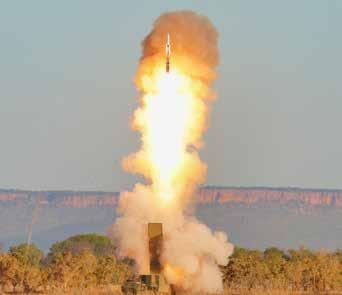

EDITORIAL
EDITORIAL SUBMISSION AND RELEASES
johnr@rtc-media.com
PUBLISHER/CEO
John Reardon • johnr@rtc-media.com
CONTRIBUTING EDITORS
Buck Biblehouse, Glenn ImObersteg, Tom Williams
ART AND PRODUCTION
CREATIVE DIRECTOR
Shae Reardon • shae.reardon@gmail.com
DIGITAL MARKETING MANAGER
Scott Blair • scott@blair-media.com
AD TRAFFIC
Vaughn Orchard • vaughno@rtc-media. com
FINANCE AND ACCOUNTING
Paige Reardon • paiger@rtc-media.com
ADMINISTRATION/CIRCULATION
Dawn Dunaway • dawnr@rtc-media.com
ACCOUNT MANAGER
SALES MANAGER
Vaughn Orchard • vaughno@rtc-media. com
CUSTOM AND CONTRACT SERVICES
John Reardon • johnr@rtc-media.com
COTS Journal
CORPORATE OFFICE
RTC Media
110 S Rancho Santa Fe, Virgin UT 84779 PO 790039
Phone: (949) 226-2023
Fax: (949) 226-2050
www.rtc-media.com
PUBLISHED BY RTC MEDIA
Copyright 2025, RTC Media. Printed in the United States. All rights reserved. All related graphics are trademarks of The RTC Group. All other brand and product names are the property of their holders.
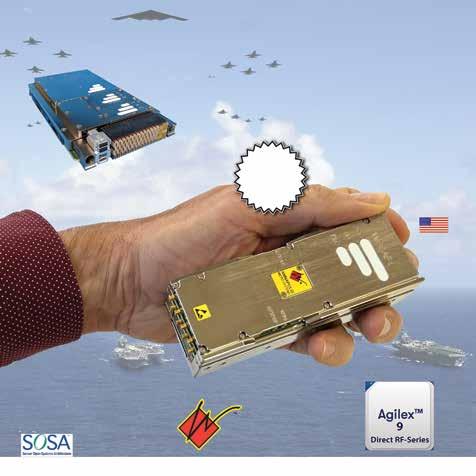








PUBLISHER’S NOTE
By Buck Biblehouse, COTS Journal
FAR Reform and Fast Tracks: DoD’s Procurement Overhaul Gives Small Innovators a Fighting Chance

The Department of Defense is reshaping how it buys technology—prioritizing speed, flexibility, and innovation. Through sweeping acquisition reforms and targeted updates to the Federal Acquisition Regulation (FAR), the Pentagon is creating real opportunity for small, IPrich firms that have long struggled to gain traction in a process designed for legacy players.
These aren’t minor procedural adjustments. They represent a structural realignment of how capability is acquired and who gets to compete.
A Default to Speed and Agility
Recent acquisition directives make the Software Acquisition Pathway the standard for programs relying
heavily on software. Combined with Commercial Solutions Openings (CSOs), Other Transaction Authorities (OTAs), and expanded simplified acquisition thresholds, the DoD is charting a course toward faster, outcome-focused procurement.
Instead of waiting years for RFP cycles, companies can now propose and prototype solutions within accelerated timelines—sometimes securing contracts in under six months. For emerging firms working in AI, cyber, autonomy, and advanced sensing, these pathways provide direct, viable access to defense markets.
FAR: Leaner, Smarter, More Flexible
Reform efforts extend deeply into the FAR. In line
with government-wide acquisition modernization, the FAR Council has been directed to streamline outdated requirements, eliminate policy-driven clutter, and emphasize statutory obligations. FAR Part 6, governing competition, has already been refined to simplify small business set-asides and clarify the framework for full and open competition.
Additionally, agencies have been granted deviation authority to move quickly and adapt contracts to meet operational needs. The focus has shifted from compliance to capability, from regulation to results.
IP-Rich Small Firms Finally Get a Shot
Small businesses holding advanced intellectual property are among the biggest winners in this shift. For decades, rigid FAR clauses and inflexible contract language discouraged participation from the very firms developing cutting-edge technologies.
The revised pathways—particularly CSOs and OTAs—allow for commercial terms, IP protections, and more collaborative engagements. These tools reward innovation and reduce the need for exhaustive compliance infrastructure that many small businesses simply don’t have.
Where legacy processes demand-
ed strict conformance, the new framework invites working solutions and iterative development. Companies can bring forward what they’ve already built, rather than starting from scratch to meet antiquated specs.
A Wake-Up Call to the Defense Industrial Base
The message is clear: the DoD wants what works, and it wants it fast. This is not about lowering standards—it’s about removing barriers that have kept innovative players on the sidelines.
Large primes will still have a role, but they’ll need to adapt. The competitive edge now favors firms that can build quickly, evolve rapidly, and deliver real-world capability with minimal overhead.
The COTS Perspective
At COTS Journal, we’ve long called for broader access to the defense market for commercial technology providers. These recent reforms reflect a growing recognition that the future of defense innovation lies in agility, not bureaucracy.
For small firms with validated technology and valuable IP, the path to DoD relevance has never been more open. The opportunity is here—for those ready to move fast and think forward.

The
Inside Track

Boeing Secures $2.8B Contract to Enhance U.S. Strategic SATCOM Capabilities
Boeing has been awarded a $2.8 billion contract for the Evolved Strategic Satellite Communications (ESS) program, the spacebased component of the U.S. nuclear command, control, and communications (NC3) architecture. The initial contract is for two satellites, with options for two more in the future.
“It’s a critical time to advance U.S. space capabilities to ensure peace through strength,” said Cordell DeLaPena, the U.S. Space Force Program Executive Officer for the Military Communications and Positioning, Navigation, and Timing Directorate. “The strategic communication mission requires protection, power, and always-available capability, even through adversary attempts to interrupt our connectivity. These satellites will provide connectivity from space as part of a refreshed NC3 architecture for our nation.”
The ESS space vehicles will provide increased capacity, flexibility, reliability, and resilience compared to the strategic communications satellites currently in orbit. Since 2020, Boeing has been executing technical maturation and risk reduction under a rapid prototyping contract for the U.S. Space Force.
“The U.S. needs a strategic national security architecture that works without fail, with the highest level of protection and capability,” said Kay Sears, vice president and general manager of Boeing Space, Intelligence and Weapon Systems. “We designed
an innovative system to provide guaranteed communication to address an evolving threat environment in space.”
Boeing’s ESS solution is underpinned by technology the company has developed for the Wideband Global SATCOM (WGS)-11 and WGS-12 satellites, which has already proven effective on-orbit aboard the commercial O3b mPOWER constellation. Building on these developments, this strategic military communications satellite constellation will be equipped with flexible and resilient signals to protect against interruption or interception.
“This win validates all the investments and innovations we’ve made in our satellite technology, creating a technically mature and low-risk offering for the government,” said Michelle Parker, vice president of Boeing Space Mission Systems.
“We scaled our production capacity, invested in our team, hired cleared talent, and assembled hot production lines to make sure that we can hit the ground running from day one. We are committed to delivering this critical capability to meet the strategic need.”
When deployed in geostationary orbit – about 22,000 miles or 35,700 km from the Earth’s surface – ESS will provide persistent coverage to strategic warfighters worldwide. The spacecraft will leverage a highly protected waveform and classified technologies developed in partnership with the U.S. Department of Defense.
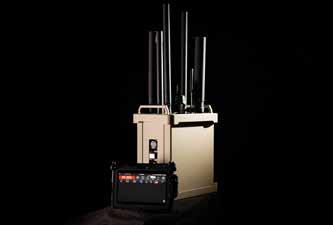
AV Launches Titan 4 and Expands Titan Family, Ushering in the Next Era of RF Counter-UAS Dominance
To meet the emerging air threats of today and the rapidly evolving threats of tomorrow, AeroVironment, Inc. (“AV”) (NASDAQ: AVAV) today announced Titan 4, the next generation of its battle-proven, warfighter-trusted Counter-Unmanned Aerial Systems (C-UAS) technology. Titan 4 is a smaller, lighter, more powerful, highly extensible Radio Frequency (RF)-based solution to detect and defeat Group 1 and 2 drone threats.
Titan 4 is portable and mission-adaptable, supporting mobile, dismounted, or fixed-site use, and can be deployed in under five minutes to identify and neutralize threats, creating a protective dome around personnel and infrastructure. Titan 4 is 17% lighter and 73% smaller than its dual-chassis predecessor, now integrated into a single, compact chassis. It offers nearly 250% more transmit power, with a total output of more than 550W across six RF bands, to address both current and emerging threats. For enhanced airspace awareness, AV has integrated its Titan-SV system into the Titan 4 to provide operators with AI/MLbacked, passive, long-range precision threat detection.
“With over a thousand units in the field and hundreds of thousands of operational hours, our team
TheInside Track

has taken lessons learned from active deployments in rapidly evolving threat landscapes to develop the next era of RF C-UAS superiority,” said Trace Stevenson, President of AV’s Autonomous Systems Segment. “Smaller, lighter, and more powerful, Titan 4 is poised to better respond to both individual threats and drone swarms in the harshest environments–using adaptive, autonomous, escalating countermeasures to protect our warfighters, allies, and infrastructure and ensure successful military operations.”
Titan 4 is the flagship solution in AV’s Titan C-UASTM suite of autonomous RF counter-drone systems. In addition to Titan 4 and Titan-SV, AV is expanding this suite of solutions with technologies spanning from larger, fixed-site configurations to small, interoperable plug-and-play sensors:
Titan-MS is an AI-powered, multi-sensor technology that detects, identifies, tracks, defeats, and reports on unmanned system threats. As the largest and most powerful solution in the Titan family, Titan-MS (Multi-Sensor) is a multi-mission, multi-threat capability suitable for fixed-site installations across air, sea, and land domains. Fusing RF, radar, and optics with AI and ML algorithms from industry-leading sensors, Titan-MS detects, classifies, and defeats RF-controlled and autonomous drone threats, while also tracking human and vehicle movement. It provides operators with recorded video and detailed analytics for after-action review to continuously improve security operations.
Titan-EO/IR is a portable, multi-sensor platform to detect, identify, track, and defeat UAS threats. Leveraging the repeatable performance of Titan’s RF capabilities along with agile Middle Wavelength Infrared (MWIR) sensors, Titan-EO/IR integrates advanced sensor arrays into a unified interface, delivering full-spectrum airspace awareness.
Titan-SV LOB is a fixed-site or vehicle-mounted small-UAS (sUAS) detection and tracking solution that provides operators with the same long-range, 360° coverage of Titan-SV along with precise azimuth and elevation for all sUAS threats. For standard protocol sUAS, Titan-SV LOB (Line of Bearing)
provides enhanced threat awareness with full 3D tracking. With proven commercial and government multi-sensor interoperability, plug-and-play compatibility with BlueSky 2 Mast systems, and a secure API supporting a wide array of integrations, Titan SV-LOB is a versatile, multi-domain C-UAS solution.
Titan-SV MOSA/SOSA is the next generation of Titan-SV in development, leveraging the passive threat detection capabilities of Titan-SV on an open-architecture sensor card for maximum interoperability across a wide variety of multi-mission systems and open-standard chassis. Using Sensor Open Systems Architecture (SOSA) and Modular Open Systems Approach (MOSA) frameworks, Titan-SV MOSA/SOSA promotes interoperability, scalability, and rapid modernization across defense platforms.
“From our fixed-site capabilities to our plug-in integrations, the Titan family of RF C-UAS solutions is a force multiplier for our warfighters,” said Jimmy Jenkins, Executive Vice President of AV’s Precision Strike and Defense Systems Group.
“With a proven track record across Titan and Titan-SV deployments, we’re proud to roll out Titan 4 and a full family of Titan solutions to meet the critical multi-mission needs of our customers. We’re moving these innovations from prototype to full-scale production to quickly deliver our U.S.-made and manufactured units into the hands of warfighters who are protecting us at home and abroad.”
Titan was selected as a C-UAS Program of Record (POR) capability for an undisclosed Department of Defense customer in 2022. Since that time, the U.S. Army, Navy, Air Force, Marines, and Special Operations Forces have deployed more than 1,000 units globally to protect U.S., allied, and coalition forces, as well as critical infrastructure. Domestically, Federal departments have deployed Titan systems for crowd protection at large gatherings and major sporting events. Internationally, countries across the North Atlantic Treaty Organization (NATO), Latin America, and other allied partners are trusting Titan to enhance their air defense capabilities against drone threats.





Inside Track The OSS to Deliver 61 Rugged Data Storage Units for the P-8A Poseidon Reconnaissance Aircraft
One Stop Systems, Inc. announced a new $5 million contract from the U.S. Navy to support the P-8A Poseidon Reconnaissance Aircraft. OSS expects the order to contribute to its revenue throughout 2025.
Under the terms of the contract, OSS will deliver 61 military-spec data storage units to the U.S. Navy. These units are designed and manufactured by OSS and incorporate hot-swappable canisters of high-capacity NVMe flash storage. The design enables rapid removal and replacement for secure data offload and analysis in demanding airborne environments.
“We are excited to announce OSS’s latest award from the U.S. Navy to support the P-8A Poseidon platform,” stated OSS President and CEO, Mike Knowles. “Our success on the P-8A program reinforces the value of our growth strategy as we pursue additional multiyear platform opportunities across defense and commercial markets. To

date, OSS has received over $45 million in total contracted revenue to support this mission-critical aircraft. This continued investment is a testament to our rugged, enterprise-class capabilities and the vital role OSS plays in enabling C5ISR operations on advanced airborne platforms. The $5 million contract also strengthens our confidence in our ability to achieve our 2025 annual guidance.”
The P-8A Poseidon is a long-range, multi-mission maritime patrol aircraft used for anti-submarine warfare, surveillance, and reconnaissance operations. OSS’s storage solutions play a key role in enabling secure, high-speed data capture and transfer necessary for the aircraft’s advanced sensor suite.
Virtualitics Joins Palantir’s FedStart Program to Accelerate Mission-Ready AI for Defense Network
Virtualitics, the Mission AI Company, announced that it has joined Palantir’s FedStart program to deliver its AI platform and applications to U.S. government agencies that require DoD Impact Level 5 (IL5) compliance. This collaboration accelerates Virtualitics’ deployment of its Integrated Readiness Optimization (IRO) application suite across national security organizations, further underscoring the company’s operational readiness to support mission-critical decision-making.
Palantir FedStart is a SaaS offering that enables companies to run their applications in secure, accredited government environments, allowing them to rapidly meet the compliance requirements of agencies across the Department of Defense. Through this partnership, Virtualitics will significantly reduce time to value for organizations seeking to deploy trusted AI solutions in support of sustainment, logistics, and operational planning.
Joining FedStart marks a significant milestone in Virtualitics’ growth, positioning its AI suite within the secure operational frameworks employed by top-tier federal organizations. It also reflects the company’s ability to scale real-world defense applications, having already secured four Phase III SBIR contracts and deployed operationally with the U.S. Air Force, U.S. Space Force, and other government agencies.
“FedStart enables us to get capability to the mission faster,” said Michael Amori, Chief Executive Officer at Virtualitics. “Instead of spending years on compliance processes, we can now focus entirely on solving the mission’s hardest readiness problems—at scale and with speed.”
“Our goal is to help innovative solutions reach the government customers
who need them as quickly as possible. To that end, we’re excited to have Virtualitics join the FedStart program,” said Ali Monfre, who leads Palantir FedStart.

Analyzing This Linkedin Knowledge Graph: This graph represents a network of Linkedin posts connected to each other based on characteristics they share such as who posted it (name), the text of the post (content), when it vas posted (time_spent), how many reactions the post received (reactions), information about the Linkedin member who posted it (about), and more. We can use this knowledge graph to analyze what qualities in a Linkedin post increase its popularity and engagement.
Inside Track The
Achieve sub-metre positioning accuracy with GNSS RTK 4 Click board from MIKROE - high-precision GNSS positioning with realtime kinematics (RTK) support, based on Quectel module.
GNSS RTK 4 Click is a compact add-on board from MIKROE. This embedded solutions company significantly reduces development time by offering innovative hardware and software products based on proven standards. Targeting high-precision GNSS positioning with real-time kinematics (RTK) support, the board features the LG290P, a quad-band GNSS module from Quectel, capable of receiving signals from GPS, GLONASS, Galileo, BDS, QZSS, and NavIC while using SBAS for enhanced accuracy.
Comments Nebojsa Matic, CEO of MIKROE: “This new Click board allows designers to simply and quickly develop systems with sub-metre positioning accuracy. Autonomous navigation, UAVs, intelligent robotics, surveying, and precision agriculture are just some of the applications that will benefit.”
A new addition to the 1800-strong mikroBUS™-enabled Click board™ family, the GNSS RTK 4 Click supports multi-mode RTK algorithms with fast convergence times and high accuracy, as well
as interference detection and integrity monitoring, ensuring sub-meter positioning in demanding environments. It features UART and I2C interfaces, a USB Type-C port for standalone configuration, and a backup battery option for continuous operation.
GNSS RTK 4 Click also features the ClickID function, which enables automatic identification by the host system, simplifying use. It is fully compatible with the mikroBUS socket and can be used on any host system that supports the mikroBUS standard. It comes with the mikroSDK open-source libraries, offering excellent flexibility for evaluation and customization.
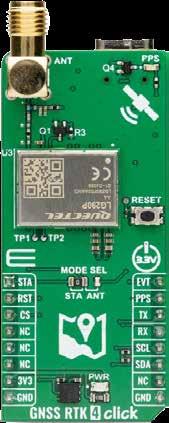
Bell to Build X-Plane for Phase 2 of DARPA Speed and Runway Independent Technologies (SPRINT) X-Plane Program
Bell Textron Inc. has been down-selected for Phase 2 of the Defense Advanced Research Projects Agency (DARPA) Speed and Runway Independent Technologies (SPRINT) X-Plane program to complete design, construction, ground testing, and certification of an X-plane demonstrator.
“Bell is honored to have been selected for the next phase of DARPA’s SPRINT program and is excited to demonstrate a brand-new aircraft with the first-ever stop/fold technology,” said Jason Hurst, executive vice president, Engineering. “This is an achievement we’ve been working towards for over 10 years, as we’ve leveraged our nearly 90-year history of X-plane development to bring new technology to our warfighters.”
The goal of the program is to equip these aircraft with the capability to cruise at speeds ranging from 400 to 450 knots at relevant altitudes and hover in austere environments from unprepared
surfaces. In Phase 1A and 1B, Bell completed conceptual and preliminary design efforts for the SPRINT X-plane. Phase 2 includes detailed design and build culminating in flight test during Phase 3. In preparation for X-plane development, Bell has completed significant risk reduction activities, including demonstrating folding rotor, integrated propulsion, and flight control technologies at Holloman Air Force Base, as well as wind tunnel testing at the National Institute for Aviation Research (NIAR) at Wichita State University. Bell has a rich history of breaking barriers and developing highspeed vertical lift technology, pioneering innovative VTOL configurations like the X-14, X-22, XV-3, and XV-15 for NASA, the U.S. Army, and the U.S. Air Force. The company continues to build on the legacy of the Bell X-1.

The
Inside Track
Aeluma Secures New Contracts from NASA and the Navy to Advance Scalable Quantum and Sensing Technologies

Aeluma, Inc. announced new contracts with NASA and the U.S. Navy that could accelerate development and commercialization for next-generation quantum and sensing systems.
Aeluma’s platform combines the performance of compound semiconductors with the scale of mainstream silicon manufacturing, enabling cost-effective solutions across high-growth markets including mobile, AI, defense and aerospace, robotics, automotive, AR/VR, and quantum computing.
Aeluma recently unveiled a successful demonstration of nonlinear optical materials integration on CMOS standard 200mm diameter silicon substrates, providing a path to scale complex quantum photonic circuits. The new contract with NASA will advance Aeluma’s efforts to commercialize entangled photon sources, a critical enabler for quantum computing and communication systems. By integrating nonlinear optical materials on CMOS-standard 200mm silicon, Aeluma provides a path to scale complex quantum photonic circuits while meeting NASA’s stringent size, weight, and power (SWaP) requirements.
The new U.S. Navy contract will support Aeluma’s low SWaP imaging sensors for next-generation submarine systems. Lever aging its ability to integrate SWIR (shortwave infrared) sensors directly on silicon, Aeluma enables multi-spectrum VIS (visi ble) + SWIR sensing in a single, compact chip. This technolo gy is also directly aligned with Aeluma’s commercial roadmap across mobile, AR/VR, robotics, and industrial sensing.
“We continue to build momentum in scaling our high-performance semiconductor platform for a diversity of applications across quantum, communications, and sensing,” said Jonathan Klamkin, Ph.D., Founder and CEO of Aeluma. “These contracts provide addition al funding to accelerate development and commercialization, and to strengthen our relationships with government agencies, partners, and customers. Each contract we have secured is synergistic with our go-tomarket strategy aimed at bringing performance semiconductors to highgrowth commercial markets.”
DroneShield Receives $9.7m Latin American Contract
· A $9.7 million package of three standalone contracts for a defense end customer in a Latin American (LATAM) country · Delivery and payment due Q3-Q4 2025
DroneShield Limited is pleased to announce it has received a package of three standalone contracts for its handheld and on-the-move counter-drone systems. The contract sum is $9.7 million, with DroneShield’s privately owned in-country reseller, which is contractually required to distribute the products to a defense end customer in a Latin American country. DroneShield expects to deliver all equipment throughout Q3 and Q4 2025, with cash payment anticipated in Q3 and Q4 of the same year. No additional material conditions need to be satisfied.
DroneShield has previously received two standalone contracts from this reseller for this defence customer in December 2024 and January 2025, totalling approximately $10.8 million, with all imports, deliveries, and payments handled on time and in a highly professional manner. There is no obligation for any additional contracts from this reseller or the customer.
Oleg Vornik, DroneShield CEO, commented: “In 2025, DroneShield has successfully delivered products, capability, and training into the Latin American market. With a substantial pipeline, diversified over multiple countries and customers, DroneShield is anticipating further developments in 2025 in this region.”
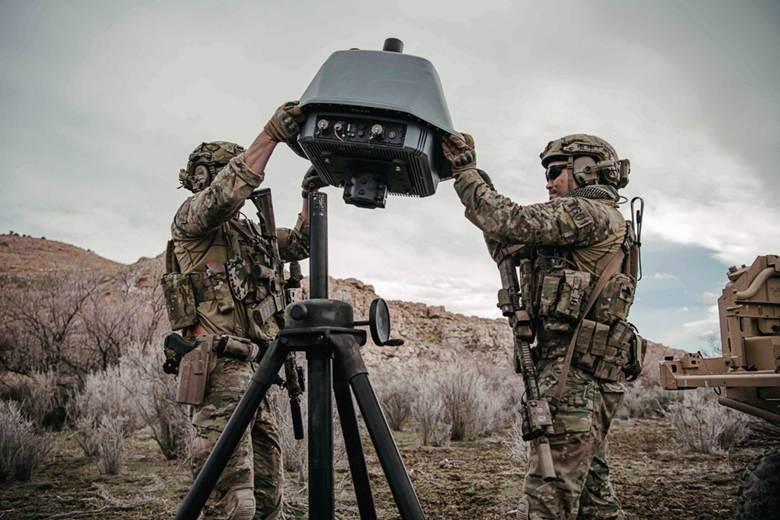
Inside Track
The DroneSense & MatrixSpace Advance Beyond Visual Line of Sight Drone as First Responder Operations
Integration delivers AI-enabled radar situational awareness to DroneSense Remote software for scalable, real-time drone operations.
DroneSense and MatrixSpace have partnered to accelerate the safe expansion of beyond visual line of sight (BVLOS) drone operations for Drone as First Responder (DFR) programs.
The integration brings MatrixSpace Radar’s real-time object detection and airspace awareness capabilities directly into DroneSense Remote (DSR), the leading operational software platform for public safety drone missions. This enables radar tracking across urban and rural settings, enhancing safety, responsiveness, and mission success.
MatrixSpace Radar delivers affordable, AI-powered situational awareness in all conditions, including low-light and low-visibility environments. With AiEdge software for real-time classification and expandable centralized sensor fusion, agencies can scale DFR operations confidently.
“DroneSense is committed to building an open ecosystem that incorporates the best available drone hardware and detect-and-avoid (DAA) technologies,” said Aydin Ghajar, Chief Operating Officer at DroneSense. “This integration with MatrixSpace represents the first of several partnerships to unlock BVLOS operations for public safety agencies. By bringing real-time radar awareness into our OpsHub interface, we’re enhancing both mission execu-
The Palm Springs Police Department (PSPD) expanded its Drone as First Responder (DFR) program, establishing the largest first responder agency coverage area (37 square miles) monitored by radar sensors, rather than humans, in the United States.
Campbell Police Department (CPD) became the first law enforcement agency in California to receive FAA authorization for single-operator BVLOS missions under a Part 91.113(b) waiver using radar instead of human visual observers. The waiver enables safer and more effective drone operations, even during night or adverse weather conditions.
“The partnership between two exceptional technologies—DroneSense and MatrixSpace—is a game-changer,” said Chief Charles L. Werner (Emeritus-RET), Director of DRONERESPONDERS Public Safety Alliance. “It delivers critical situational awareness to real-time crime centers, fusion centers, and command staff through a single mission platform.”
As more public agencies, regional consortia, and critical infrastructure providers turn to drones for real-time intelligence, the integration of ground-based radar is essential to scaling safe and effective BVLOS operations.
“DroneSense is leading the charge in advancing operational best practices and technology for public safety,” said Lori DeMatteis, Chief Revenue Officer at MatrixSpace. “Together, we’re delivering a turnkey radar and software solution that supports next-generation airspace awareness, including

Inside Track
Mercury Expands Processing Hardware Production Agreements with European Defense Prime Contractor
Mercury Systems, Inc. announced that it has signed two agreements with a European defense prime contractor to expand and accelerate the production of processing subsystems and components for radar and electronic warfare missions.
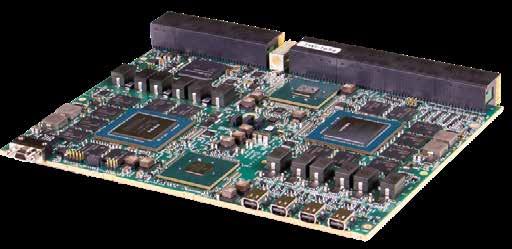
In July, Mercury extended this decade-long customer relationship with a five-year agreement that will enable faster, higher-volume production of sensor processing subsystems powered by Mercury’s HDS6605 6U OpenVPX multiprocessing boards for airborne, land-based, and sea-based radar systems.
Earlier this month, Mercury signed an expanded production agreement with the same customer to deliver Monolithic Microwave Integrated Circuit (MMIC) products that support electronic warfare sensors. Mercury’s mini-tuner
modules and amplifiers deliver industry-leading performance at a price, enabling the sensors to capture and convert analog RF signals.
“Mercury is proud to expand our relationship with one of Europe’s leading providers of defense systems that are playing an active role in military operations in Europe and beyond,” said Paul Tanner, Vice President of Mercury International. “We are strengthening our commitment to the European defense sector by making investments to reduce development and production timelines for our unique processing products and solutions.”
NIST USGv6 Test Program Achieves Significant Milestone for IPv6-Enabled Networks
University of New Hampshire Interoperability Labs (UNH-IOL), in collaboration with the National Institute of Standards and Technology (NIST), is proud to announce a significant program achievement: 1,000 combined product entries between the USGv6 (2008) and USGv6-r1 Product Registries. This milestone supports the Federal government’s initiative to adopt IPv6 and transition to IPv6-only networks with a goal of at least 80% of IP-enabled assets on Federal networks operating in IPv6-only environments by the end of FY2025.
The USGv6 test program was launched back in 2008 to facilitate the adoption of IPv6 within the U.S. Government. The test program supports the reliable procurement of IPv6-capable networked IT products and services. The USGv6 Test Program is a comprehensive test program designed to ensure that network products comply with IPv6 specifications established by the Internet Engineering Task Force (IETF). Governments and enterprises are prioritiz-

ing IPv6 to future-proof their networks and meet the performance and security demands of modern applications.
“The University of New Hampshire Interoperability Labs has been a vital partner in the definition, evolution, and execution of the USGv6 Testing Program,” said Doug Montgomery, Manager of Internet Technologies Research at NIST. “Providing standards-based conformance, interoperability, and functional testing covering over 1,000 distinct IPv6-enabled products has significantly benefited the networking industry as a whole and provided a vital tool to support the acquisition of IPv6 technologies by the Government.”
The UNH-IOL is recognized as a leading independent provider of testing and standards conformance services, playing a vital role in fostering innovation and compliance within the networking industry. Since 2008, it has established itself as a leader in IPv6 testing by collaborating closely with organizations such as NIST, the IPv6 Forum, and the IETF.
Additionally, the lab offers IOL INTACT® software, which enhances development cycles by improving test readiness for testing under the USGv6 and IPv6 Ready Logo programs. IOL INTACT ensures that products meet stringent criteria for functionality, interoperability, and deployment readiness in IPv6 environments.
TheInside Track
Curtiss-Wright Awarded $31 Million IDIQ Contract by the U.S. Navy to Supply Airborne Mission Processors for the Triton UAV.
Curtiss-Wright to provide a rugged Modular Open Systems Approach (MOSA)-based mission processing system to support the Navy Minotaur software platform
Curtiss-Wright Corporation announced that it will provide Airborne Mission Processors (AMP) and AMP spare parts in support of PMA-262 Persistent Maritime Unmanned Aircraft Systems’ MQ-4C Triton aircraft and PMA-290 Maritime Patrol and Reconnaissance Aircraft under a $31 million firm-fixedprice indefinite delivery, indefinite quantity (IDIQ) contract awarded by the Naval Surface Warfare Center (NSWC). The contract also includes Total Lifecycle Management™, training, and engineering services in support of the AMP. Work on the contract will be performed by Curtiss-Wright’s Defense Solutions Division and is scheduled to run through September 2029.
“We are very proud to have been selected by the Naval Surface Warfare Center to provide our rugged airborne mission processor technology, total lifecycle management, and support services for Naval manned and unmanned aircraft programs,” said Brian Perry, Senior Vice President and General Manager, Curtiss-Wright Defense Solutions Division.
FROM

“The AMP system was derived from the legacy Airborne Mission Management System, previously qualified and deployed on the Triton UAV platform. Through only minor enhancements, Curtiss-Wright was able to significantly increase processing capability in the aircraft, enabling enhanced ISR features and the ability to host Navy Minotaur software platforms.”
The AMP features Curtiss-Wright’s industry-leading MOSA modules, including the VPX6-1959 single board computer, CHAMP-XD2M High Memory Capacity Multi-Core HPEC Module, VPX6-684 Network Switch, and VPX6-4943 GPGPU board, as well as the front panels, fan control board, and chassis.
Curtiss-Wright previously announced that it is providing and servicing MOSA-based Keyed Broad Area Maritime Surveillance Airborne Recorder (K-BAR) Network Attached Storage (NAS) solutions supporting MQ-4C Triton and future PMA-290 aircraft, including chassis, docking stations, removable storage modules, and lab cable sets.
1800'S TO 2025 & BEYOND IN ONE REFUELING!

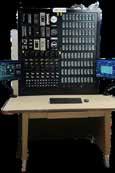


Programmable Logic Controller & Transmitter
The “ALL FOR ONE”: any and all input signals for one 4-20mA C.L out and “ONE FOR ALL”: one PLCT for any and ALL control outputs
A PLCT consists of 2 isolated channels that display the input signal (top) in % and output C.L in mA (bottom). It converts any of >50 input signal converters that converts any signal to 0.1-0.5Vdc that the xmtr plug-in (and field replaceable) module converts to isolated 4-20mA with up to a two mile range for proportional process control via the current loop and on/off control outputs via SPDT, open collector xmtr, MOSFETS, reed relays & fail safe relays plus automatic “night vision” color selectable display & display blinking visual alarm for local and remote operator warning. The PLCT also offers optional serial I/O for your SCADA ,
etc.



READY FOR ANYTHING: HUMS AND PREDICTIVE MAINTENANCE
By Marc Steiner, CEO, Advanced Defense Technologies, Inc. (ADTI)
The U.S. military is under immense pressure to keep its equipment operational. From aircraft to submarines and armored vehicles, our troops rely on a diverse range of equipment for personal safety and mission success. Sustaining this equipment is not just a matter of national security, but one of ultimate consequence.
As a result of ongoing operational demands, the military is frequently using its equipment far longer than expected, and demand for replacement parts outpaces the industrial base’s capability to produce them. Simultaneously, budget pressures and personnel shortfalls are reducing the number of trained maintainers available at the tactical edge.
The traditional, planned maintenance model, or worse, waiting for equipment to break before fixing it, is no longer viable. To overcome current equipment maintenance challenges, the Department of Defense is turning to predictive maintenance.
The Shift to Predictive Maintenance & How HUMS Fits In
Predictive maintenance involves using data gathered from equipment to anticipate when components will wear out or fail, thereby reducing downtime, extending the lifespan of tools, and cutting costs associated with emergency repairs or unnecessary part replacements.
By analyzing usage patterns, environmental conditions, and performance indicators, predictive systems can identify issues early and prevent safety risks. For a military force operating in complex and contested environments, this is critical.
A key enabler of predictive maintenance is the Health and Us-
age Monitoring System (HUMS). HUMS is an onboard diagnostic system that collects, processes, and reports on data from sensors embedded throughout military equipment. These systems provide real-time feedback on the mechanical health of critical subsystems and integrate that data to assess the equipment’s overall status.
HUMS monitors key variables, including temperature, vibration, and load stress. When combined with predictive analytics platforms, this data can determine when a part is likely to fail, identify systems under abnormal strain, and indicate how long a platform can operate safely before requiring maintenance.
With these insights, the military can shift maintenance from time-based schedules to condition-based decisions. For example, instead of replacing a component every 500 hours, HUMS can indicate precisely when maintenance is required, reducing unnecessary maintenance and saving costs.
To make this intelligence more practical, HUMS provides users with a specific checklist outlining the steps to correct equipment issues. These insights are tailored to particular users, such as commanders, operators, and technical teams, to ensure the information is actionable and relevant.
Notably, HUMS cannot operate in isolation; it relies on a comprehensive set of technologies to reach its full potential. First, embedded sensors must be rugged, accurate, and capable of transmitting real-time data. Next, AI and machine learning platforms must process the data from the sensors and generate actionable alerts. Finally, secure, high-speed communications must connect these systems to commanders and support units.

A Navy harbor security boat conducts high-speed maneuvers during a Citadel Protect weapons training exercise near White Beach Naval Facility, Japan. The exercise allows Naval Security Forces personnel to simulate and train for threats to Navy installations and units.
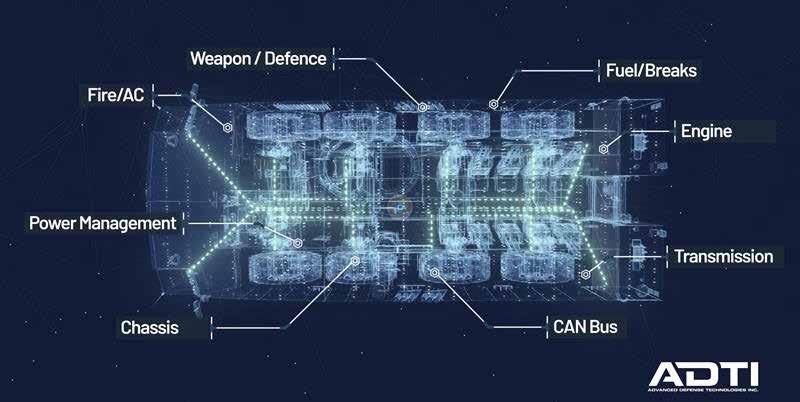
When these pieces come together, predictive maintenance becomes a force multiplier. HUMS detects the problem, AI predicts when it will fail, and networked systems ensure the correct parts are ready before the failure occurs. However, even with the right technology in place, sustainment depends on reliable access to the parts and materials needed to keep systems running.
Fortifying the U.S. Defense Industrial Base
The U.S. defense industrial base is undeniably strained. Manufacturing timelines can’t always meet equipment needs, and many critical components, like batteries, sensors, and microelectronics, are sourced from unstable suppliers.
Without a reliable supply chain, the benefits of predictive maintenance and HUMS are futile. That’s why the U.S. must not only adopt HUMS and predictive systems, but also expand and secure its production base. Some ways to do so include onshoring key manufacturing capabilities and incentivizing commercial suppliers to enter the defense market.
Commercial components, such as those used in robotics, UAVs, and vehicle electronics, must be sourced from trusted suppliers. In our modern, globalized economy, national security depends as much on the supply chain as it does on battlefield tactics.
Defense leaders should consider alternative sources to help diversify traditional supply chain sources and techniques. This includes leveraging foreign-developed technology that has been adapted to specific platforms. By implementing strong integration programs using techniques such as Model-Based Systems Engineering, integrators can better understand how components and systems can be brought together to the greatest effect. This approach leverages existing, proven technologies.
Looking Ahead
Predictive maintenance, powered by technologies like HUMS, is essential to military readiness. It allows the U.S. military to maintain complex systems more efficiently, reduce unplanned failures, and keep equipment operational when it’s needed most.
HUMS offers the opportunity to change the way maintenance is planned and executed fundamentally. For example, the maritime industrial base that supports operations and maintenance for the Navy is not operating significantly differently than it did during the Cold War. While efforts have been made to improve readiness, there are still lengthy periods of shipyard work that reduce the fleet’s operational availability and increase total costs. A dynamic maintenance program, enabled by effective monitoring and analysis, is inherently beneficial to achieving shorter shipyard stays and lower overall maintenance costs.
As operational demands increase and logistics become more complex, the ability to monitor, analyze, and act on equipment health data in real-time is critical. HUMS gives commanders and maintainers the tools to stay ahead of failures rather than react to them. However, to unlock the full value of HUMS, the U.S. must invest in a resilient industrial base and secure supply chain.
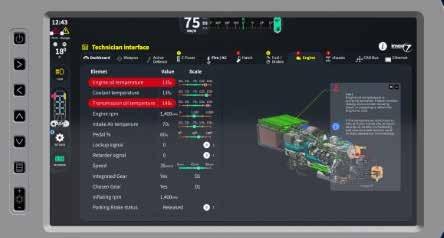

About the Author:
Marc Steiner is the CEO of Advanced Defense Technologies, Inc. (ADTI). In this role, he ensures ADTI is equipped to deliver cutting-edge technologies that advance aerospace and defense missions. Before joining the private sector, Marc served as a U.S. Navy officer and Fleet Support Branch Chief at the National Geospatial-Intelligence Agency.
For over three decades, ADTI has been manufacturing and delivering electronic components and systems to the world’s leading armored vehicle defense industries. Together with its parent company, IMCO Industries Group, ADTI’s decades of operational expertise ensure optimal HUMS implementation.



Integrate existing equipment using DVI, HDMI, RS-170, or SDI with state-of-the-art, lowlatency, ARINC 818

Convert ARINC 818 to/from DVI, VGA, LVDS, & More
Low Power: 5-10 Watts
Customizable form factor & connector LC or ARINC 801 fiber options available

Convert ARINC 818 to/from DVI, HD-SDI, 3G-SDI, Ethernet, RS170, NTSC, CVBS, & More
Customizable for protocol conversion, switching, splitting, concentration, resizing, & scan conversion
Marc Steiner is the CEO of Advanced Defense Technologies, Inc.
SYSTEM DEVELOPMENT

NAVIGATING NEW CHALLENGES AND OPPORTUNITIES IN MILITARY PROCUREMENT
By Alicia Taylor, The Open Group FACE Consortium Director
The modern military procurement cycle is a remarkable feat of coordination, scale, and technological sophistication. Over the decades, it has evolved into a highly efficient system for delivering advanced warfighting capabilities. Through close collaboration between governments, defense contractors, and research institutions, it has produced some of the most potent and complex military platforms in history, platforms that have shaped global power dynamics and reinforced military dominance.
Yet the landscape is shifting rapidly. Emerging technologies, unconventional threats, and accelerating innovation are challenging traditional procurement models. To remain effective, this system must adapt to becoming faster, more agile, and strategically forward-looking in an era where speed and adaptability are as critical as firepower.
A shifting landscape
The nature of conflict is evolving. Adversaries no longer need to match Western military might through traditional means. Instead, they are leveraging commercial off-the-shelf (COTS) technologies and rapidly modernizing their defense industries. This democratization of capability means that near-peer status can be achieved more quickly and affordably than ever before.
At the same time, the economic environment is undergoing a shift. Defense budgets are under increasing
scrutiny, and the historical correlation between capability growth and rising costs is becoming unsustainable. The traditional model, where greater effectiveness is achieved through ever-larger investments, is reaching its limits.
This dual pressure, from both adversaries and economic realities, demands a new approach. It is no longer enough to be the most capable; militaries must also be the most agile and efficient.
The case for agility
The traditional procurement cycle, while effective, is not built for speed. The timeline from identifying a new requirement to fielding a solution can span years, sometimes decades. In today’s unpredictable and fast-moving geopolitical environment, that delay can be a critical vulnerability.
Moreover, the cost of a military system does not end at deployment. Most of the price of an army platform is spent on maintenance and upgrades over its lifecycle. These processes are often labor-intensive, slow, and expensive, adding further strain to limited resources.
To maintain a decisive edge, militaries must be able to respond to emerging threats quickly, update systems in the field, and do so with fewer resources. This requires a fundamental shift in how capabilities are developed, integrated, deployed, and sustained.


Why MOSA matters
Enter the Modular Open Systems Approach (MOSA). MOSA is not just a technical framework, but a strategic imperative. By embedding principles of interoperability, modularity, and standardization into procurement workflows, MOSA enables faster development, easier upgrades, improved training, and more efficient maintenance.
But MOSA is not a plug-and-play solution. It requires a cultural shift across the entire procurement ecosystem. It demands that stakeholders, ranging from program managers and engineers to policymakers, adopt a new mindset—one that values openness over proprietary control, collaboration over siloed development, and adaptability over rigidity.
Crucially, MOSA should not be seen as an additional burden. While it does require an upfront investment in new processes and standards, it ultimately reduces longterm costs and accelerates the delivery of capabilities.

In a world of constrained budgets and accelerating threats, that is not a luxury but rather a necessity. Building on success to meet new realities In times of uncertainty, the natural impulse is often to fall back on familiar strategies, doubling down on what has worked in the past. But when it comes to military procurement, that instinct must be carefully resisted.
Ironically, the very success of the traditional model is now the strongest argument for its evolution.
The world is changing too quickly, and the stakes are too high, to rely solely on legacy systems and approaches that were designed for a different era.
Accelerating the adoption of MOSA is not about discarding what works; it is about building on a firm foundation while preparing for a more dynamic future. It is about preserving the strengths of the current procurement system —its scale, rigor, and reliability —while addressing its limitations in speed, flexibility, and interoperability. MOSA offers a pathway to ensure that the next
generation of military capabilities is not only technologically superior but also adaptable, sustainable, and responsive to rapidly evolving threats.
This transformation will not be easy. It will demand bold leadership, a clear strategic vision, and a willingness to challenge deeply entrenched norms and bureaucratic
inertia. It will require new partnerships, new mindsets, and a commitment to continuous innovation. But the payoff is significant: a more agile, efficient, and resilient defense ecosystem that is better equipped to meet the demands of modern warfare and safeguard national security in an increasingly complex world.

Airmen unload high-mobility artillery rocket system launchers assigned to the Army’s 25th Infantry Division from an Air Force C-5 Galaxy at Joint Base Pearl Harbor-Hickam, Hawaii,
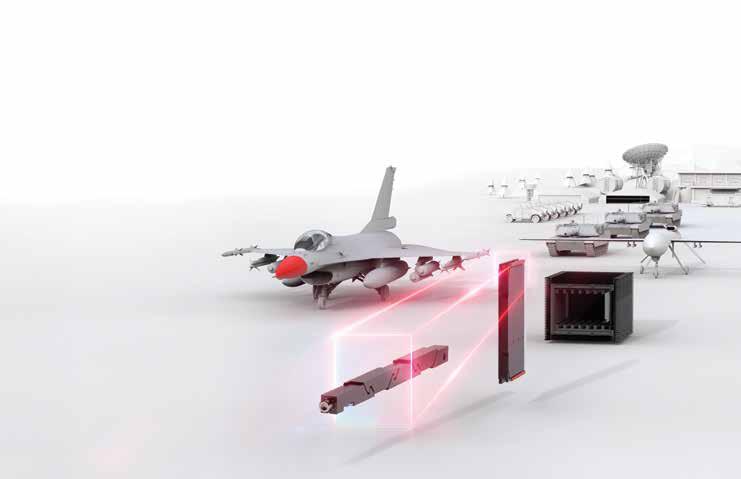
Modifiable Positive Retraction Card-Lok
for reliable 2nd Level Maintenance

July 2025
COT’S PICKS
XCalibur4840: Intel® Xeon® D-2800 Processor-Based 6U VPX-REDI Module with 64 GB of DDR4, 100 Gigabit Ethernet, and SecureCOTS™
The XCalibur4840 is a secure, high-performance single-board computer based on the Intel Xeon D-2800 series (formerly Eddy Lake) of processors, making it an optimal choice for computationally intensive applications requiring maximum data protection.
The XCalibur4840 offers exceptional speed with four 100GBASE-KR4, two 1000BASE-X, and two 10/100/1000BASE-T Ethernet ports. The dual 100GBASE-KR4 Ethernet ports provide fallback redundancy to ensure a consistent processor throughput of up to 100 Gbps is maintained at all times.
The XCalibur4840 is a secure, high-performance single-board computer based on the Intel Xeon D-2800 series (formerly Eddy Lake) of processors, making it an optimal choice for computationally intensive applications requiring maximum data protection. This 6U VPX-REDI module integrates SecureCOTS technology with a Microsemi PolarFire System-on-Chip (SoC) FPGA, enabling the hosting of custom functions to protect data from modification or observation. It provides an ideal solution when stringent security capabilities are required.
The XCalibur4840 provides incredible speed with two 100GBASE-KR4, two 1000BASE-X, and two
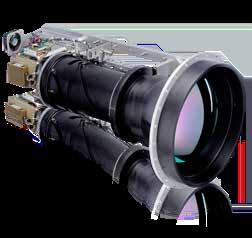
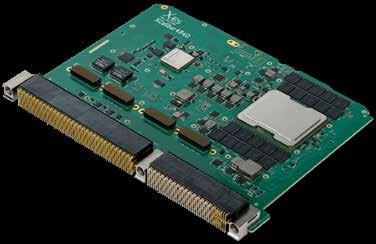
10/100/1000BASE-T Ethernet ports. The dual 100GBASE-KR4 Ethernet ports provide fallback redundancy to ensure a consistent processor throughput of up to 100 Gbps is maintained at all times. The XCalibur4840 accommodates up to 64 GB of DDR4 ECC SDRAM in four channels and up to 256 GB of onboard NAND flash in addition to numerous I/O ports, including USB 2.0, PCIe, and RS-232/422/485 serial through the backplane connectors. The XCalibur4840 provides additional expansion capabilities by including two integrated XMC/PMC sites. These sites each include an x8 PCI Express connection to the Intel Xeon D processor and X12d+X8d I/O, mapped directly to the VPX backplane connectors. Additionally, each mezzanine site offers a single PMC connector, providing a build option for P64s or X38s to connect to the VPX backplane connectors.
The XCalibur4840 offers a SOSA-aligned pinout compatible with backplane slot profile SLT6-PAY-4F1Q2U2T-10.2.1. The AMPS profile is MODA6-12.2.1-1-F2C-(2E18/E8)(4P4F)(2E22E3), but limitations apply; contact factory for details.
Wind River VxWorks and X-ES Enterprise Linux (XEL) Board Support Packages (BSPs) are available.
Teledyne
FLIR OEM Enhances Defense Readiness with NDAA-Compliant Thermal Imaging Solutions
Full Suite of NDAA-Compliant
Thermal Camera Modules Empowers OEMs to Build Secure, High-Performance Systems
Teledyne FLIR OEM, a part of Teledyne Technologies Incorporated, has announced compliance with the National Defense Authorization Act (NDAA) of its lineup of dual-use Neutrino®, Boson®, Hadron™, and Lepton® thermal camera modules for United States government contractors and original equipment manufacturers (OEMs). These modules enable the development of secure, high-performance thermal imaging systems in compliance with the NDAA.
The NDAA restricts the use of video surveillance and telecommunications equipment from certain foreign
sources in U.S. defense systems. Teledyne FLIR OEM’s NDAA-compliant thermal camera modules are eligible for a wide range of federal, state, and local government contracts. They are easily integrated into both existing and next-generation defense platforms, including ground vehicles, uncrewed systems, threat warning, missile seekers, targeting systems, counter-unmanned aircraft systems (C-UAS), precision strike platforms, and soldier systems.
“Our thermal imaging technologies provide critical situational awareness and decision support for the U.S. Armed Forces and allied nations,” said Jared Faraudo, vice president, product management, Teledyne FLIR OEM. “The comprehensive portfolio of NDAA-compliant Neutrino, Boson, Hadron, and Lepton camera modules reflects our significant investment and strict adherence to meeting congressional standards through SWaP-optimized (Size, Weight, and Power) thermal imaging solutions.”
July 2025
COT’S PICKS
Spectrum Control Introduces Connector Express, a Configurable Filtered Circular Connector that Reduces Size and Shortens Lead Times by 50%
Single Filtered MIL-DTL-38999 Style Integrated Connector Solution Ideal for Military and Aerospace Designs Where Space and Weight are a Premium –
Spectrum Control, the leader in controlling the electromagnetic spectrum, introduces Connector Express. This configurable, filtered MILDTL-38999-style circular connector reduces size and shortens lead times by 50%, while delivering high-quality electromagnetic interference (EMI) filtering and shielding. The new Connector Express leverages Spectrum Control’s over seven decades of EMI leadership to create a single, filtered connector solution for military/aerospace designs where space and weight are a premium.
Faster Prototypes Speed Time-to-Market
Connector Express prototypes are available in 12 weeks – half the typical lead time of conventional connectors – to help speed time-to-market. Spectrum Control has implemented several methods to improve delivery, including a convenient three-step online process:
Finish Selection – Engineers can select from a variety of finishes with environmental protections, including nickel and Olive Drab Cadmium (ODCAD), that meet military and RoHS requirements.
Choose Configuration – Three insert pin configuration options (22, 37, or 55 lines) are available. Each meets MIL-STD-1560 for high reliability and interoperability in harsh military and aerospace environments.
Advanced Filtering – Filtering values for each pin can be selected from six standard options.
Further expediting delivery is achieved through an advanced internal supply chain that strategically stocks key raw materials to accelerate prototype design and development. Standard Operating Procedures (SOPs) for manufacturing enhance Spectrum Control’s state-of-the-art high-volume facility. Standardized documentation is also created for the
quick release of new designs.
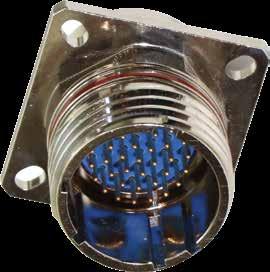
Unique Hybrid Design
Connector Express incorporates a unique hybrid design. In-house planar capacitor technology brings control and optimization advantages. There is a standardized planar capacitor for each insert pattern, along with configurable tunable planar substrate filtering. By combining the planar and substrate capacitor networks, near-ideal performance is achieved up to 1 GHz and beyond. Additionally, the circular connector can be configured for mixed signal applications.
Minimizing Equivalent Series Resistance (ESR) and Equivalent Series Inductance (ESL) is critical in systems operating above 100 MHz. The novel substrate design and construction of Connector Express overcome ESR and ESL parasitics typically seen with chip capacitors by optimizing trace lengths and vias to minimize signal delay and impedance, thereby improving signal integrity.
Filter Integration Shrinks Footprint
Space and weight considerations, a priority on modern system board designs, are effectively addressed with Connector Express. Spectrum Control leveraged its extensive filtering experience to develop an advanced approach that integrates high-quality filters at the connector entry point, the most effective position for high-frequency designs. Additionally, multiple coaxially grounded three-terminal filters are packaged in the interconnect for greater size and EMI mitigation efficiencies compared to integrating filters at the board level.
Connector Express can be integrated into various military and aerospace systems to address SWaP-C requirements. The circular connectors address modern design considerations for communication systems, weapons, missiles, and radar systems, military vehicles, UAVs, electrical systems, cockpit displays, and engine controls.
Pixus Now Offers Carrier Boards for Customized AI Computing & Test Subracks
Pixus Technologies, a provider of embedded computing and enclosure solutions, offers a new design for carriers and specialty cards, catering to AI Computing, Test & Measurement, and other high-performance computing systems.
Utilizing Pixus electrical and mechanical design expertise, the company can develop 19” rackmount test subracks that include a customer’s specific I/O and backplane interface needs on a carrier board. The Pixus standard front panel, ejector handle, and modular electronics enclosures can be leveraged to create a turnkey, customized solution.
Pixus offers modular open system architecture (MOSA) and customized solutions. This includes backplanes, enclosures, subrack components, chassis managers, power solutions, advanced cooling, and more.
Contact Pixus to discuss your specific requirement.
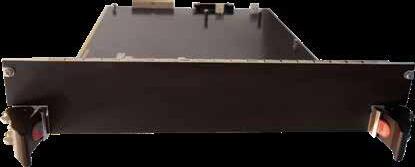
July 2025
COT’S PICKS
Microchip Expands Space-Qualified FPGA Portfolio with New RT PolarFire® Device Qualifications and SoC Availability
Latest achievements highlight over 60 years of space heritage and commitment to high-reliability, radiation-tolerant technology for next-generation satellite and avionics systems.
Continuing to support the evolving needs of space system developers, Microchip Technology (Nasdaq: MCHP) has announced two new milestones for its Radiation-Tolerant (RT) PolarFire® technology: MIL-STD-883 Class B and QML Class Q qualification of the RT PolarFire RTPF500ZT FPGA and availability of engineering samples for the RT PolarFire System-on-Chip (SoC) FPGA. These achievements underscore the company’s more than 60 years of spaceflight heritage and its commitment to delivering highly reliable, low-power solutions for the most demanding space applications.
MIL-STD-883 Class B and Qualified Manufacturers List (QML) Class Q are industry standards that define rigorous testing and qualification processes for microelectronic components used in high-reliability applications, such as space and defense. MIL-STD-883, developed by the U.S. Department of Defense, outlines methods for environmental, mechanical, and electrical testing to ensure device reliability under extreme conditions. QML Class Q, managed by the Defense Logistics Agency (DLA), certifies that manufacturers consistently produce components meeting these stringent requirements.
Unlike traditional SRAM-based FPGAs, RT PolarFire devices utilize nonvolatile technology, making them immune to configuration memory upsets caused by radiation. This eliminates the
need for external mitigation measures, helping reduce system complexity and overall cost. RT PolarFire FPGAs consume up to 50% less power than mid-range SRAM-based alternatives, enabling satellite designers to optimize Size, Weight, and Power (SWaP) without compromising mission-critical reliability. The PolarFire RTPF500ZT FPGA advances the family’s capabilities, offering enhanced Single Event Latch-up (SEL) radiation performance and increased robustness for in-flight programming compared to the original RTPF500T.
“Microchip Technology has a proven track record of supporting critical space missions, spanning low Earth orbit, satellite platforms, and deep space exploration,” said Shakeel Peera, vice president of marketing and strategy for Microchip’s FPGA business unit. “Our commitment to stringent quality standards, compliance with international regulations, and long-term product reliability has solidified Microchip’s reputation as a trusted provider of aerospace hardware. As the industry demands higher performance, increased logic density, and robust security, we remain dedicated to innovating solutions that address the evolving needs of modern space systems.”
Engineering samples of the RT PolarFire SoC FPGA further strengthen Microchip’s portfolio of space-qualified solutions. This SoC integrates a real-time, Linux®-capable, RISC-V®-based microprocessor subsystem with a flight-proven FPGA architecture, enabling both flexible software support and deterministic real-time performance. With a roadmap to QML Class V and Class Y, the RT PolarFire SoC FPGA is well-suited for central satellite processing, avionics, and payload control, where high reliability is essential.

RT PolarFire devices are supported by the Libero® SoC Design Suite, a comprehensive IP library, reference designs, and solution stacks tailored for space applications. RT PolarFire SoC FPGAs also integrate with Microchip’s Mi-V ecosystem for RISC-V development. Additionally, development kits and hardware platforms are available to facilitate rapid prototyping, hardware validation, and system integration, enabling engineers to bring mission-critical space systems from concept to deployment efficiently.
COT’S PICKS
Abaco Systems Launches GRA117SVIO Open VPX 3U
Video Graphics & GPGPU Card Enabling Real-Time Video Capture & Processing
AMETEK Abaco Systems introduces the GRA117SVIO, a SOSA-aligned Open VPX 3U video graphics and GPGPU card. It’s powered by the NVIDIA RTX™ 2000 Ada generation GPU with 8 GB GDDR6 graphics memory designed to support up to six 12G-SDI video streams, enabling tactically imperative real-time, high-performance video capture and processing.
Designed for extreme environments and mission-critical applications, the GRA117SVIO offers a superb range of advanced features, including:
• NVIDIA RTX™ 2000 GPU (Ada Generation Architecture) for AI-accelerated data processing
• 8 GB of GDDR6 advanced graphics memory
• Meets VITA 47.1 environmental specifications for shock and vibration
• PCI Express Gen 4 connectivity with bifurcation support to ensure
Advantech Launches MIC-3812V2: Rugged Carrier Board for NVIDIA MXM GPU Solutions
Advantech, a global leader in embedded computing solutions, announced the launch of the MIC-3812V2. This 3U CompactPCI Serial peripheral board is designed to support mission-critical applications in demanding industries. Designed for exceptional reliability and performance, the MIC-3812V2 integrates MXM 3.0/3.1 graphics modules featuring NVIDIA accelerated computing and supports the latest MXM GPU cards—including the SKY-MXM-2000A, SKY-MXM-3500A, and SKY-MXM-5000A built on the NVIDIA Ada Lovelace architecture, delivering robust computing power for railway, medical, and other rugged and industrial applications.
Defense
Applications: Rugged Design for Robust Environments
The MIC-3812V2 addresses the growing demand for high-performance embedded systems capable of operating reliably in challenging conditions across the following key sectors: Railway: Compliant with EN50155 and EN50121-3-4 standards, ensuring uninterrupted operation in sustained vibration rail systems.
Medical: Supports high-resolution imaging and real-time diagnostics in medical devices, meeting stringent safety and reliability requirements.
Key Features: Built to Empower Industrial Innovation 1. High-Density Connectivity for Demanding Environments
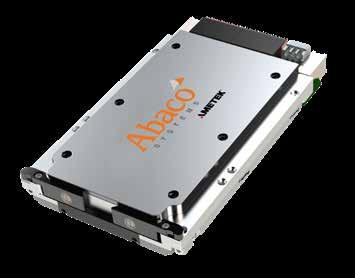
ultra-fast data transfer speeds
• Compatible with SOSA-aligned backplanes
“The GRA117SVIO delivers system engineers an ultra-fast GPGPU solution for real-time video capture systems required by today’s advanced military for C5ISR solutions like UAV detection systems,” said Simon Collins, Director of Product Management at Abaco Systems. “This new video graphics card offers advanced AI processing and is the latest in Abaco’s investment in high-performance, SOSA-aligned, military embedded computing products.”
Designed for use in hostile air, land, and maritime applications, the rugged GRA117SVIO is an ideal solution for defense system platforms that require advanced AI processing. This SOSA-compliant solution guarantees scalability and seamless integration, ensuring adaptability to future defense architectures.

Features 2 HDMI 2.0 and 2 DisplayPort 1.4a connectors on the front panel, plus an optional DisplayPort routed to the backplane. This robust I/O supports flexible 4-display configurations essential for real-time monitoring, medical imaging, and tactical command systems.
2. Compact & Modular Design: MIC-3812V2 is a 3U 8HP MXM Carrier, which is Compatible with Type A (82x70mm²), Type B, and Type B+ (82x105mm²) MXM modules, and supports expandability of PCIe capabilities.
3. Scalable Solutions: Seamlessly integrates with Advantech’s MIC-330/V2 CPU boards, MIC-3890V2 DC power, 21-Slot/11Slot 3U/4U Enclosures and NVMe Carrier MIC-3821, forming a complete, rugged computing platform.
4. Universal Compatibility with NVIDIA MXM GPU Modules: Specifically supports the NVIDIA Ada Lovelace GPU architecture: SKY-MXM-2000A, SKY-MXM-3500A, and SKYMXM-5000A.
July 2025
COT’S PICKS
Brelyon Unveils the World’s First Monitor with Programmable Depth
Brelyon, an MIT spin-off innovating in the computational display space, announced Ultra Reality™ Extend, an immersive display line that renders virtual images in multiple depths. As the first commercial multi-focal monitor, the Extend model offers multi-depth programmability for information overlay, allowing users to see pictures from 0.7 meters to as far as 2.5 meters of depth virtually rendered behind the monitor; organizing various data streams at different depth layers, or triggering focal cues to induce an ultra immersive experience akin to looking out through a window.
“Building on the success of our Ultra Reality™ product, we’re taking advantage of new GPU capabilities to process light and video signals inside our display platforms,” said Barmak Heshmat, CEO of Brelyon. “We are thinking beyond headsets and glasses, where we can leverage GPU capabilities to do real-time driving of higher-bandwidth display interfaces. Maturing the industry from the age of photorealism to the age of photon realism, and designed for high-performance applications such as simulation and training, control centers, and teleoperations, Ultra Reality™ Extend is a new platform for AI and light to impact enterprise visualization, navigation, and computer interaction.”
AI’s Fast Advancement in Video Generation is Unlocking New Modalities of Displays
AI’s rapid advancement in video processing is unlocking new display modalities. While AI has long been used for image enhancement, such as HDR conversion and upscaling, we’re now at an inflection point. Advanced hardware and software capabilities enable the transformation of lower-dimensional streams into multiple higher-dimensional streams, creating high-performance visual portals.
The Ultra Reality™ Extend platform, with its software and processing capabilities (Brelyon Visual Engine), is designed to leverage these advancements. It utilizes transformers to automatically assign depth


bits to video content in real-time, generate depth effects, and augment annotations within the user’s field of view, enabling multi-focal experiences.
Whether handling sensitive data for operators or creating immersive simulations for training, AI enables the addition of an information layer augmented to existing data. AI-enabled features, such as auto-annotation and auto-highlighting, further empower users to navigate operational environments effectively without interrupting the primary video stream.
Ultra Reality Extend is the world’s first multi-focal monitor, which utilizes AI to convert and generate its content. The experience is similar to looking out of windows, where different layers of depth appear at varying distances.
Uncompromising Visual Performance and Immersion
Ultra Reality™ Extend runs like an 8K display (4K, 60Hz with 1 bit of monocular depth), delivering stunning visuals. Building on Brelyon’s partnerships with UDC and LG, the display features OLED-based, curved 2D virtual images, with the most extensive screen size stretching to 122 inches and extending 2.5 meters deep, viewable through a 30-inch frame. Since the depth allows images to be seen optically from farther away, the display can sit closer to the viewer, providing an even larger field of view.
M.2 Multifunction Analog I/O - M.2 Multifunction High-Speed Analog I/O Cards -
Ever-expanding M.2 card
ACCES I/O Products announces the immediate release of a new family of M.2 multifunction analog I/O cards— the M.2-ADIO Family. This innovative line of 12 and 16-bit M.2 models starts with its flagship model, the M.2-ADIO16-8FDS. This high-speed, 16-bit multifunction analog input/output board is ideal for precision measurement, analysis, monitoring, and control in countless embedded applications. The M.2-ADIO16-8FDS can sample at speeds of up to 1 MHz for the board’s eight single-ended or four differential analog input channels. Standard features in the M.2-ADIO Family include four 16-bit analog outputs and 16 high-current digital I/O lines—all in the ultra-small M.2 2260/2280 embedded form factor (NVME compatible). Striking an excellent price/performance value, this family of boards also includes models with slower A/D speeds, no analog outputs, and a group of 12-bit modules for less demanding applications.
The M.2-ADIO Family comprises over a dozen models, with list prices
lineup targets a wide array of applications
ranging from $249 to $669, offering an unprecedented value. The cards feature seven software-selectable per-channel analog voltage input ranges, including 4-20 and 10-50mA current inputs (factory options). This channel-by-channel programmable gain feature enables the measurement of a wide range of large and small signals in a single scan, all under software control at up to 1 MHz. A 4 kSample FIFO and DMA-driven data are optimal when high data rates must be sustained for either short or long periods.
The four analog outputs each have five software-selectable ranges and can drive loads of up to 10 mA. The flagship FDS model features hardware-paced, eight-k-sample FIFO+DMA-driven Streaming Waveform Playback on one, two, three, or all four DACs, at any aggregate rate up to 1 Msps.
The 16 digital I/O lines can be used independently as simple input or output, external ADC trigger, ADC start conversion, DAC trigger (LDAC), watchdog status output, and more.
The cards are designed for use in harsh and rugged environments, including
COT’S PICKS July 2025
military and defense applications, as well as commercial and industrial settings such as medical devices, point-of-sale systems, kiosk design, retail, hospitality, automation, and gaming.
Key features of the M.2-AIO Family include:
• 2 Type B/M 2260/2280, with latching I/O connector
• 16-bit, bipolar, differential, A/D converter sampling at up to 1MHZ
• Software selectable as eight single-ended or four differential inputs
• Seven channel-by-channel Programmable differential input ranges from ±0.3125V up to ±12V
• A/D starts via software, external input, or periodic timer
• A/D “scan start” mode optimizes inter-channel timing, reducing skew
• High Impedance, 8-channel input: 500 MΩ
• 32K FIFO plus DMA for efficient, robust data streaming
• 16 digital I/O; 8 individually configurable for input or output
• Four 16-bit analog outputs with optional eight kSample FIFO+DMA Waveform Streaming
• 5 per-channel programmable ranges: 0-5V, 0-10V, ±2.5V, ±5V, ±10V
• Outputs drive ±10mA
• Onboard watchdog with status output
• RoHS compliant standard
New XMC Module Interfaces 10GbE Ports to AMD Zynq® UltraScale+™ MPSoC for Processing and Programmable Logic
Acromag has released its XMC-FZU7EV module, which features an AMD (Xilinx) Zynq UltraScale+ multi-processor device, along with a variety of high-speed serial or 10GbE interfaces, for real-time control and adaptive processing. This XMC module offers a powerful combination of multi-core ARM processors, FPGA logic, GPU, and video codec, providing a versatile and high-performance computing system. It is well-equipped for accelerated computing, sensor fusion, imaging algorithms, advanced filtering, and many other data processing functions. The rugged modularity of the XMC mezzanine provides flexibility for use on various carrier platforms, including those for defense, industrial, and laboratory applications. When using a VPX or PCIe carrier card with front I/O access, an AXM-FZU01 plug-in card can provide dual QSFP+ ports for 10-Gigabit Ethernet, routed directly to the programmable logic. A conduction-cooled XMC provides backplane I/O and a VITA 66 fiber-optic transceiver linking four 16Gb/s lines to the logic blocks.
The AMD XCZU7EV multi-processor system-on-a-chip (MPSoC) features a quad-core ARM Cortex-A53 and a dual-core ARM Cortex-R5, providing optimal application and real-time processing capabilities. On-chip programmable logic features 500k cells, 1728 DSP slices, extensive RAM, and high-speed interfaces, enabling it to outperform multi-chip FPGA solutions. An embedded Mali™-400 GPU and H.264/265 video codec enable low-latency image processing for embedded vision applications. Many other I/O peripherals add further versatility.
“With tight integration of multiple processors and FPGA logic on a single chip, this XMC provides a powerful, configurable computing engine capable of offloading critical applications, such as graphics and video pipelining or accelerating AI functions,” suggests Robert Greenfield, Acromag’s Business Development Director. Designed and manufactured in the USA, these XMCs provide depend-
All ACCES M.2 cards feature high-retention latching connectors for shock and vibration mitigation, as well as an optional extended operating temperature range of -40°C to +85°C. The small size (M.2 2260/2280: 22mm x 60mm/80mm) allows for maximum performance in applications where space is a valuable resource. The newer M.2 form factor offers a compact footprint for embedded applications where space is critical. This M.2 card is compatible with standard NVMe sockets, which are common on all modern motherboards.
Factory options include extended temperature, current inputs (4-20mA, 1050mA), and voltage dividers for higher voltage inputs. Additional customization options include conformal coating, custom software / product-labeling, and more — even entirely new features, enabled by our advanced FPGA-based design!
These cards are compatible with most operating systems and include a free software package for Linux and Windows. This package contains sample programs and source code in C# and Delphi for Windows. Linux support includes installation files and samples for the programming level, provided through our open-source kernel driver. Third-party support includes a Windows standard DLL API library usable from most popular application programs. Embedded OS support encompasses the family of Windows Operating Systems, including IoT. ACCES also now offers a VxWorks driver/library for the ultimate real-time process monitoring and control solution.
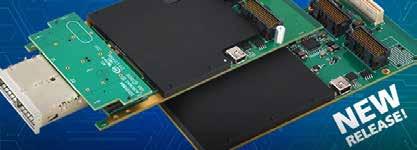
able operation for military, aerospace, transportation, manufacturing, and scientific research systems—the versatile mezzanine format mounts on VPX, VME, PCIe, and other embedded computing carrier cards. Aircooled versions are available for front I/O, while conduction-cooled models are available for backplane I/O. Accommodations for front I/O plug-in cards allow custom interfaces for RF, fiber, USB, video, serial, LVDS, and other I/O signals.
AMD’s Zynq UltraScale+ MPSoC architecture fully integrates the programmable logic with the processing system via thousands of highly efficient, high-bandwidth interconnects that are not possible with multichip solutions. This optimization eliminates software bottlenecks, enabling custom co-processors and memory hierarchies to meet application-specific needs for real-time control, graphics/video processing, waveform/packet processing, deep learning, AI acceleration, and much more, all with dramatic power savings. Multiple levels of security increase safety and reliability in critical operations.
Acromag’s Engineering Design Kit (EDK) provides example designs that give host access to the hardware I/O. The examples are implemented using the AMD Vivado development environment and provide a starting point for customers to develop their customized applications. Vitis® and PetaLinux® examples are also provided. VxWorks, Linux, and Windows support are available.
COT’S PICKS July 2025
Cost-effective, High Resolution 5” Touch Displays
Inelco Hunter is pleased to announce the introduction of a new 5-inch touch display featuring IPS technology, a Digital 24-bit RGB Interface, RTP Touch, and a backlight of 300 nits. This cost-effective display is ideal for applications such as smart home control panels, vending machines, and measurement devices.
The 5-inch TFT display features a resolution of 800 (RGB) × 480 dots, a wide viewing angle, a transmissive typically black screen, and 300 cd/m² brightness. It has an operating temperature range of -20°C to +70°C with a rated lifetime of 20,000 hours (MTBF) at standard conditions. The thickness is a mere 3.1mm, and the display is powered by an ST7265 driver IC, offering robust performance. In addition to home and commercial applications, other application areas will include industrial control, transportation, and more.
The display is also available as a Projective Capacitive touchscreen version (PCAP), which has a robust, durable glass surface and is highly resistant to scratches. The surface can be easily cleaned, making it ideal for applications such as medical instruments where hygiene is paramount.
In addition to offering the displays as a standard product, Inelco Hunter provides a customization service to help customers tailor products to their specific solutions. Inelco Hunter’s engineering team can help cus-
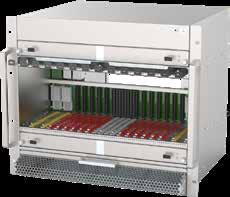
nVent Electric plc announced the launch of its first MTCA.4 Crate by Revision 3.0 of the MTCA.0 base standard.
In September 2023, PICMG released Revision 3.0 of the MTCA.0 specification. This revision supports PCI Express Gen 4 and 5, as well as 100GBASE-KR4, to improve system performance by a factor of 4. To achieve these higher data rates, SMD and compression mount connectors have been evaluated by the NextGen MTCA working group, and the simulation results have served as a basis for defining the entire data transmission channel for MicroTCA. The transmission channel has been divided into logical parts to define the limits for boards and backplanes, ensuring all MTCA.0 Rev 3.0 MCHs, AMC’s, and Crates work together in a PCI Express Gen4/5 or 100 GbE environment.
As these high-end switches consume more power compared to their predecessors, the power budget for the MicroTCA Carrier Hub, where the switch resides, has been upgraded from 80 W to 110 W. To prevent overheating, the power budget of the cooling units was also upgraded to 110 W. A software mechanism helps ensure the backward compati-

tomers define project requirements, including as-yet unformed product ideas, and turn a concept into an outstanding product. A set of pre-design activities is worked through, which is critical when defining product specifications, documenting design challenges, and identifying potential risks. This added-value support is at the core of Inelco Hunter’s philosophy, having been in place for over 30 years, which sets them apart from “stock and ship” distributors.
bility of old and new MCHs, Power Modules, and Cooling Units.
In the Rear Transition Module (RTM), the improved 110W power limit is cooled with powerful fans and a superior cooling design.
The Cooling Unit firmware is based on revision 3.0 of the MicroTCA specification. When powered up, it remains at the 80W power rating. If the Power Module supports 110W per slot, the cooling unit will adjust accordingly. For Power Modules that only support 80W, if the IPMI communication is lost, it will remain within the 80W power envelope.
The Renesas H8S controller was previously used on the nVent SCHROFF MTCA.4 Crates have now been set to end of life. For this reason, nVent has introduced a new Cooling Unit Manager design based on the STM32 controller from STMicroelectronics, which includes the additional features described above.
To achieve the higher data bandwidth, the maximum trace length defined in MTCA.0 Rev. 3.0 needs to be matched. Therefore, the MCH slots moved from the outside to the middle of the card cage.
The PCB material has been upgraded to a lower-loss material with SMD connectors for superior performance. For optimized routing, the physical order of the AMC modules has been changed. In the past, the nVent SCHROFF MTCA.4 Crates used the physical order starting from 1 from left to right, now it’s changed into: 7-8-9-10-11-12-MCH1MCH2-6-5-4-3-2-1.
Annapolis Micro Systems.
Behlman Electronics.
Dolphin.
Great River Technology.
COTS Journal (ISSN#1526-4653) is published monthly at; 110 S Rancho Santa Fe, Virgin UT 84779. Periodicals Class postage paid at San Clemente and additional mailing offices. POSTMASTER: Send address changes to COTS Journal, 110 S Rancho Santa Fe PO 790039, Virgin UT 84779.




SUPERIOR RELIABILITY AT UP TO 50% LESS
Behlman has provided reliable power to mission-critical military airborne, shipboard, ground and mobile applications for over 50 years. Behlman offers the widest array of COTS AC to DC and DC to DC power supplies that meet military requirements at industrial pricing.
> Proven military reliability without the high cost of full mil-spec
> Built to perform to full power at rated temperatures
> Modified COTS solutions that offer faster delivery, higher reliability and lower cost than custom designs
> Hundreds of designs to meet a wide range of applications


